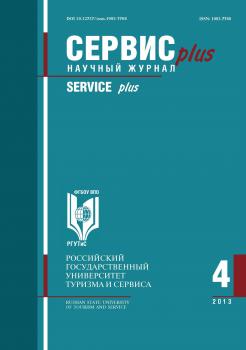The article discusses the recovery process of the destroyed film industry during one of the most difficult periods — the post-war years. During the years of the great Patriotic war The Soviet urban chain lost more than 500 cinemas, located in major cities and industrial centers. Rural cinema network lost almost half of the cinemas (about 7000). The construction of new urban cinemas was carried out very poorly in the early postwar years; for 5 years only 77 theaters had been built. The film distribution, as spreading of the cinema, developed very slowly in the postwar years. In addition to purely economic problems, in these years our film faced difficulties of a different nature. Films shown on the Soviet cinemas were forcibly shifted in the direction of ideological and political propaganda that led to a narrowing of the genre and thematic range of the Soviet cinema. The results of the work of the film industry itself were also affected with the consequences of policy "malokartinye» the authorship of which is attributed to Stalin. The essence of it was a controversial idea: to spend on movies less money, but earn more. As a result the movie industry was in a very difficult position. In 1947 it was decided to release in USSR a lot of foreign films, announced «trophy». These films caused a lot of criticism on the part of Agitprop, and in fact, saved the Soviet film distribution in the late 1940s — early 1950s. Fascination with foreign «innovations» was inevitable: the decline of the Soviet film industry didn´t allow satisfying the screen with new Soviet films, and nobody reduced plan profits from film distribution to the Ministry of cinematography. A great help in further raising the income of film distribution was the expansion of old Soviet films. In addition, cinema directors took a rather ingenious attempt of the extension of the films shown on cinemas at the expense of shooting on film theatrical productions.
: film distribution, cinema network, spreading of the cinema, «great style», «malokartinye», «trophy movies», Agitprop [agitation and propaganda]
После трагических потерь и испытаний, пережитых страной в пору недавней войны, в условиях все еще крайне бедной мирной жизни, во время тяжелейшего восстановления разрушенной страны именно кинематограф мог бы стать настоящей отдушиной для народа. Для миллионов людей даже совсем незатейливые фильмы, вроде «Беспокойного хозяйства»,
«Первой перчатки», не говоря уже о таких фильмах с большим зрительским потенциалом, как «Золушка», «Каменный цветок», «Сказание о земле Сибирской», «Кубанские казаки», «Смелые люди», «Молодая гвардия», «Повесть о настоящем человеке», становились и развлечением, и утешением, дарили надежду, помогали справляться с трудностями.
1. Istoriya kinootrasli v Rossii: upravlenie, kinoproizvodstvo, prokat. Red. Fomin V.I. M.: Minkul´t RF, VGIK, 2013.
2. Kortunov V.V. Imitatsiya zdravogo smysla. Ocherki po teorii mirovoy kul´tury. M., 2001.
3. Kortunov V.V. Ratsional´noe i irratsional´noe v evolyutsii kul´turno-istoricheskikh tipov mirovozzreniya. Dis... d-ra filosof, nauk/ Gosudarstvennyy institut iskusstvoznaniya. M., 1999.
4. Kortunov V.V. Chelovek mezhdu real´nost´yu i kiberprostranstvom. Sovremennye issledovaniya sotsial´nykh problem (elektronnyy nauchnyy zhurnal). 2013. № 1 (21). S. 3. http://journal-s.org/index. php/sisp/article/view/31 (data obrashcheniya: 15.06.2015).
5. Kortunov V.V., Sheleketa V.O. K voprosu o filosofsko-kul´turologicheskom obosnovanii gumanitarnoy ekspertizy sotsial´no-politicheskikh protsessov. Servis plus. T. 8. 2014. № 4. S. 9-14.
6. Manevich I. Za ekranom. M.: Novoe izdatel´stvo, 2006. 340 s.
7. Mar´yamov G. Kremlevskiy tsenzor. Stalin smotrit kino. M.: «Kinotsentr», 1992. 127 s.
8. RGALI, f. 2456, op. 1, d. 1889, s. 83-92.
9. RGALI, f. 2456, op. 1, d. 2736, s. 67-69.
10. RGALI, f. 2456, op. 4, d. 154, s. 52-69.
11. RGALI. f. 2456, op. 4, d. 112, s. 54.
12. RGASPI, f. 17, op. 125, d. 576.
13. RGASPI, f. 17, op. 132, d. 92, s. 1-12, 16-18, 38-39.
14. RGASPI, f. 17, op. 133, d. 340, s. 292-293.
15. RGASPI, f.17, op. 116, d. 368, s. 7.
16. Kortunov V. Modernization of Russia in the Context of Cultural Experience of the East and West. Middle East Journal of Scientific Research. 2013. T 14. № 1. S 41-46.

















